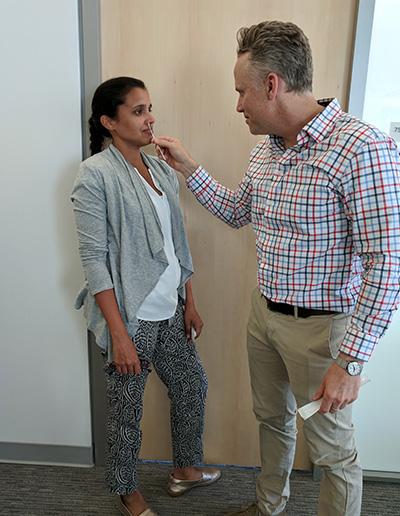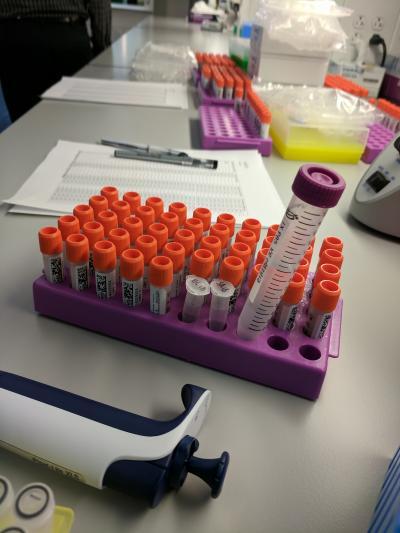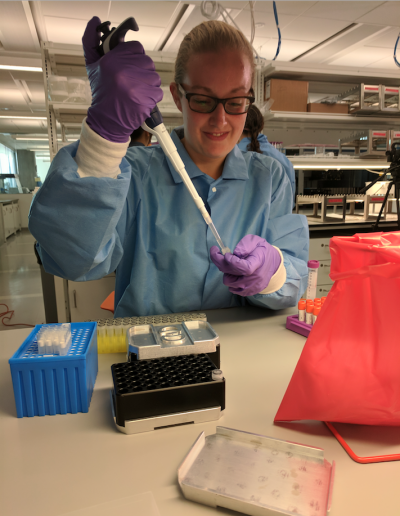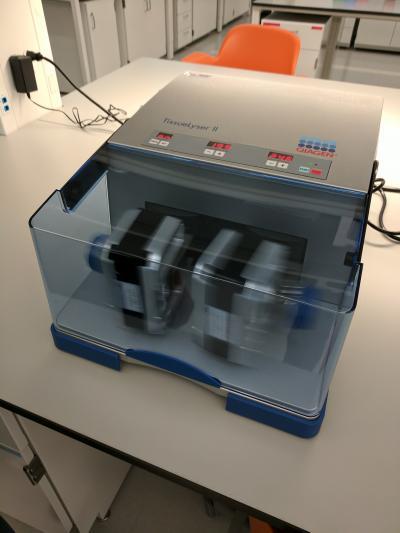Notes from the Lab: We’re Studying What Bacteria Live In Your Nose
This month, we’re all about our research on the nasal microbiome! ARAC researchers are studying bacteria living in our noses with the goal of finding new strategies to protect people from dangerous Staph (Staphyloccocus aureus) infections. Staph (S. aureus) is a common inhabitant of the human nose and people who are carriers are at increased risk of developing life-threatening infections caused by Staph.
We are looking to see if other bacteria living in the human nose could “kick out” Staph or prevent it from getting in (i.e., we’re looking for bacterial bouncers). Eventually, the research team hopes to find bacteria that can be safely introduced into people’s noses to protect them from Staph infections or new molecules that could prevent or treat Staph infections. We’re especially interested in finding ways to stop the spread of aggressive and resistant strains of Staph, like MRSA.
To do this, we are first studying healthy adults to understand the scope and dynamics of the nasal microbiome. We are doing this through a collaboration with the Danish CDC (Staten Serum Institut). We have enrolled hundreds of participants in Denmark and will be following them for one year. This will tell us more about the nasal microbiome of people who persistently carry Staph and those that either carry Staph sporadically or not at all.
“This collection of studies will help us to identify potential natural competitors against S. aureus and allow us to test these bacteria against S. aureus in a controlled environment,” said Dr. Cindy Liu, ARAC’s Chief Medical Officer. “We have a lot of work ahead of us, but if we can identify promising good bacteria, this may lead to new ways to prevent the spread of MRSA and other S. aureus strains that have become resistant to multiple antibiotics.”
This research project also includes scientists from Denmark’s Statens Serum Institut, Northern Arizona University, and the University of Texas Medical Branch at Galveston.
Below is a brief overview of the process:
Step 1: Swab the nose to collect bacteria samples.
(Note: this is a recreation informally done in our office. The official swabbing for the project is taking place in Denmark.)
Step 2: Bacteria samples from the nasal swabs
Step 3: Extracting DNA from bacteria
Step 4: The bacteria samples are then put in the Tissuelyser which shakes up the bacteria at a very fast speed to break up the cells and prepare for molecular analysis.
Step 5: After this step, it's time to run real time PCR to quantify bacteria counts.





